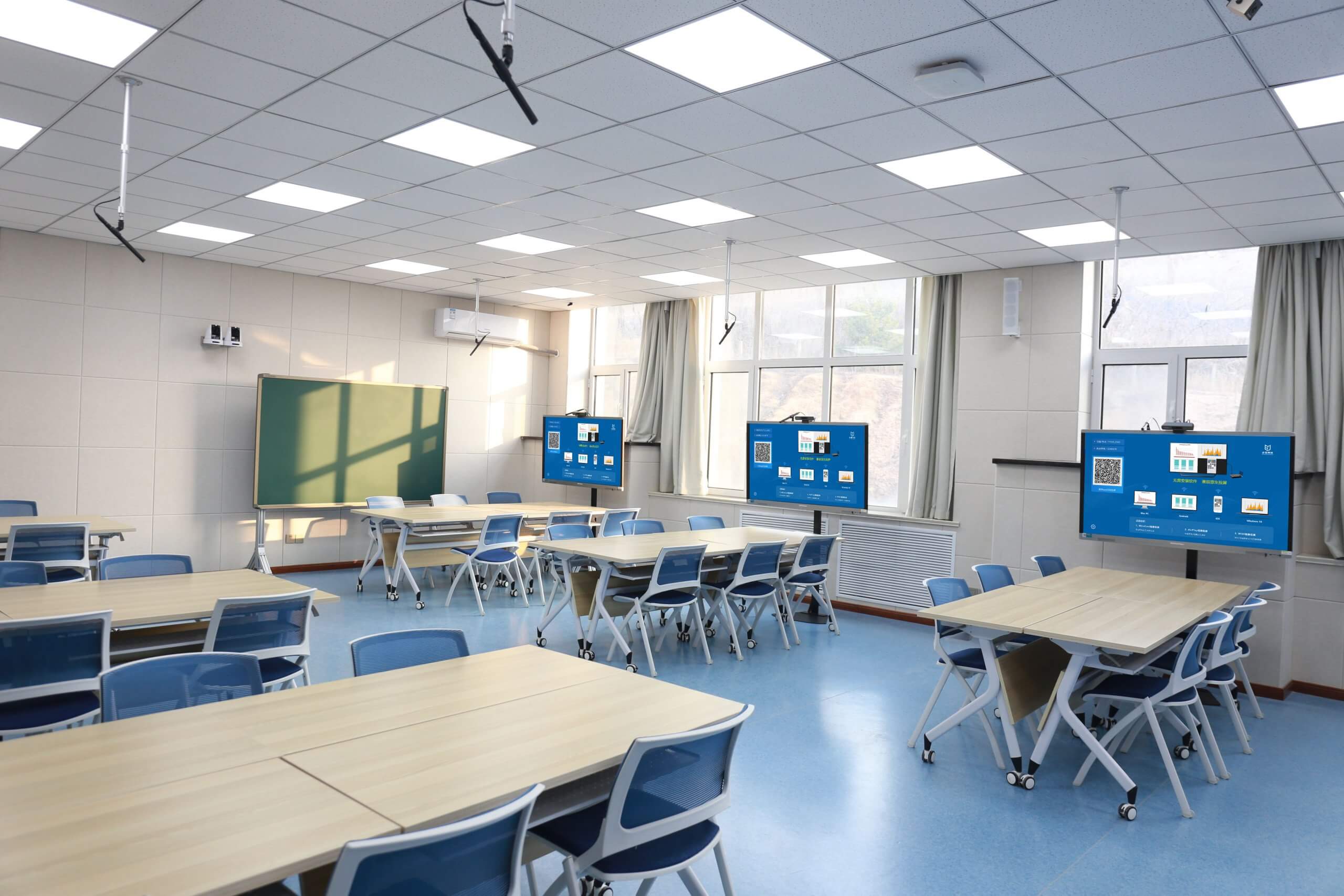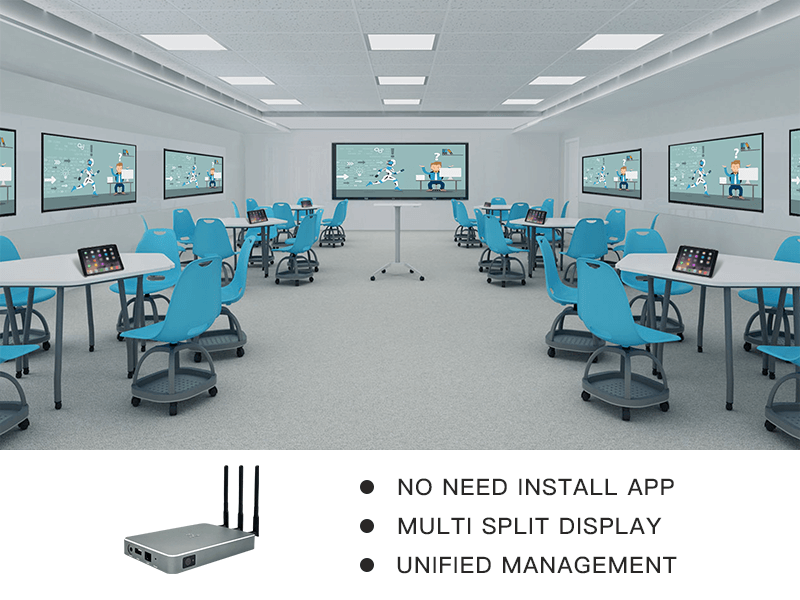“Technology is a driving force in education, opening up many doors and preparing students for what lies ahead, not behind,” said Kirsty Kelly, Primary Years Program Coordinator at the Canadian International School in Singapore. “It allows for greater differentiation, individualized learning, real world integration, and varied assessments.”
Today’s schools are changing and the incorporation of digital advances into the classroom was inevitable and necessary. To prepare students for their future, education must utilize the most advanced tools and techniques available.
wireless display
Projectors on their surface are a simple technology that has been around for decades. Historically used to project lecture notes or multimedia presentations, these classroom cornerstones can do so much more.
Wireless display plays an active on smart classroom. The flexible device can be hooked up to a wide range of devices allowing instructors and pupils to fully utilize it.
Smartboards
A step beyond interactive projectors are the wide range of “smartboards” being utilized in classrooms.
Some smartboards operate just like a whiteboard, allowing a person to write on them with real or digital markers. BiJie Smartboards then surpass their simple whiteboard ancestors by recording what is written or turning a digital marker line into a tangible visual element.
Digital textbooks
Digital textbooks are becoming more crucial as some schools are cutting back on expensive physical textbooks. Some schools are going beyond adopting a new format for education texts.
In 2009, the state of California began replacing some high-school textbooks with “open-source” digital books. And digital textbook provider Boundless estimates students at half of the United States’ universities have used their free digital textbooks.
Initially, digital textbooks were simply the old textbooks in digital form. Nowadays, the digital versions are starting to look more like online databases or programs than their paper predecessors.



